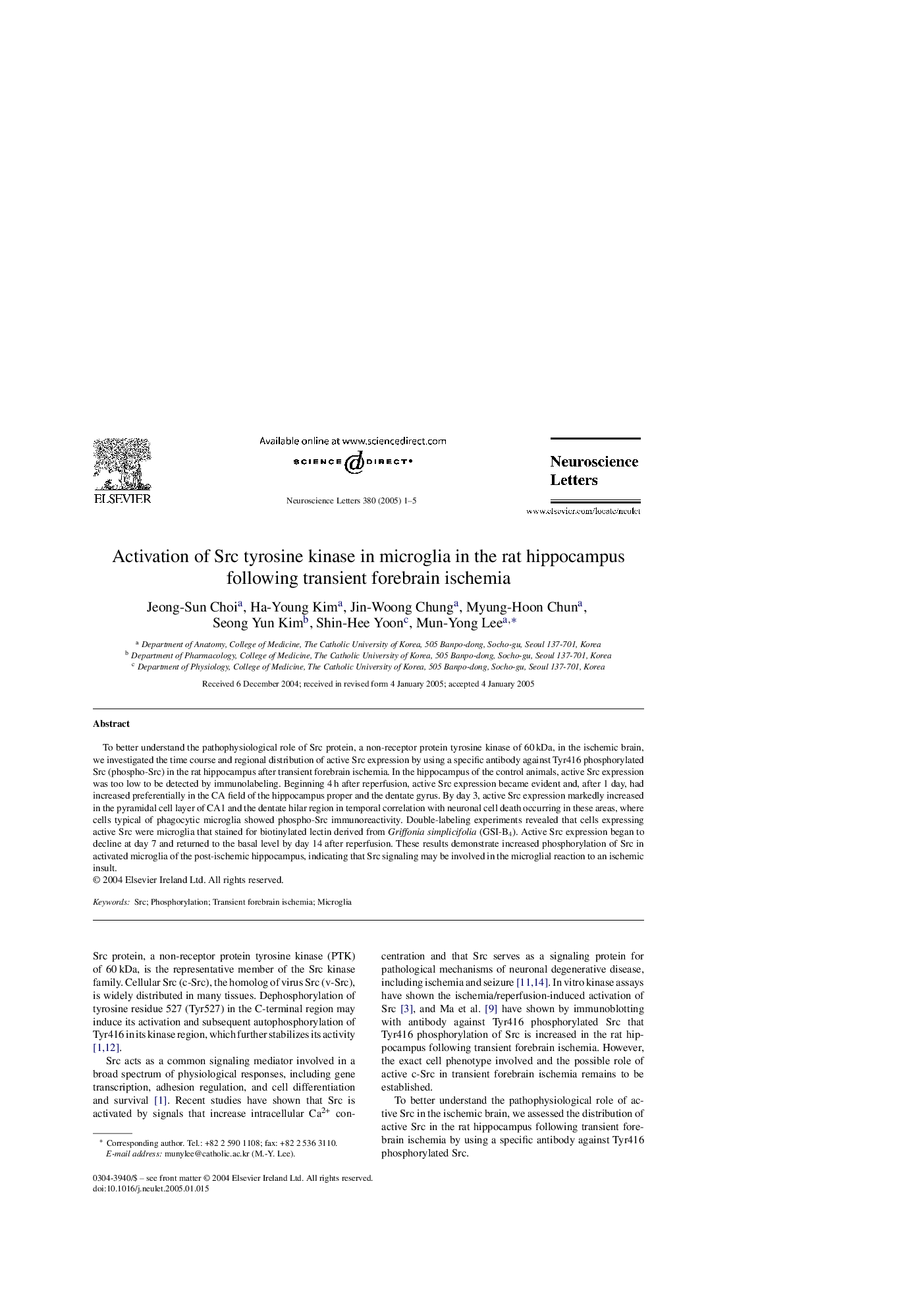| Article ID | Journal | Published Year | Pages | File Type |
|---|---|---|---|---|
| 9429419 | Neuroscience Letters | 2005 | 5 Pages |
Abstract
To better understand the pathophysiological role of Src protein, a non-receptor protein tyrosine kinase of 60Â kDa, in the ischemic brain, we investigated the time course and regional distribution of active Src expression by using a specific antibody against Tyr416 phosphorylated Src (phospho-Src) in the rat hippocampus after transient forebrain ischemia. In the hippocampus of the control animals, active Src expression was too low to be detected by immunolabeling. Beginning 4Â h after reperfusion, active Src expression became evident and, after 1 day, had increased preferentially in the CA field of the hippocampus proper and the dentate gyrus. By day 3, active Src expression markedly increased in the pyramidal cell layer of CA1 and the dentate hilar region in temporal correlation with neuronal cell death occurring in these areas, where cells typical of phagocytic microglia showed phospho-Src immunoreactivity. Double-labeling experiments revealed that cells expressing active Src were microglia that stained for biotinylated lectin derived from Griffonia simplicifolia (GSI-B4). Active Src expression began to decline at day 7 and returned to the basal level by day 14 after reperfusion. These results demonstrate increased phosphorylation of Src in activated microglia of the post-ischemic hippocampus, indicating that Src signaling may be involved in the microglial reaction to an ischemic insult.
Related Topics
Life Sciences
Neuroscience
Neuroscience (General)
Authors
Jeong-Sun Choi, Ha-Young Kim, Jin-Woong Chung, Myung-Hoon Chun, Seong Yun Kim, Shin-Hee Yoon, Mun-Yong Lee,
